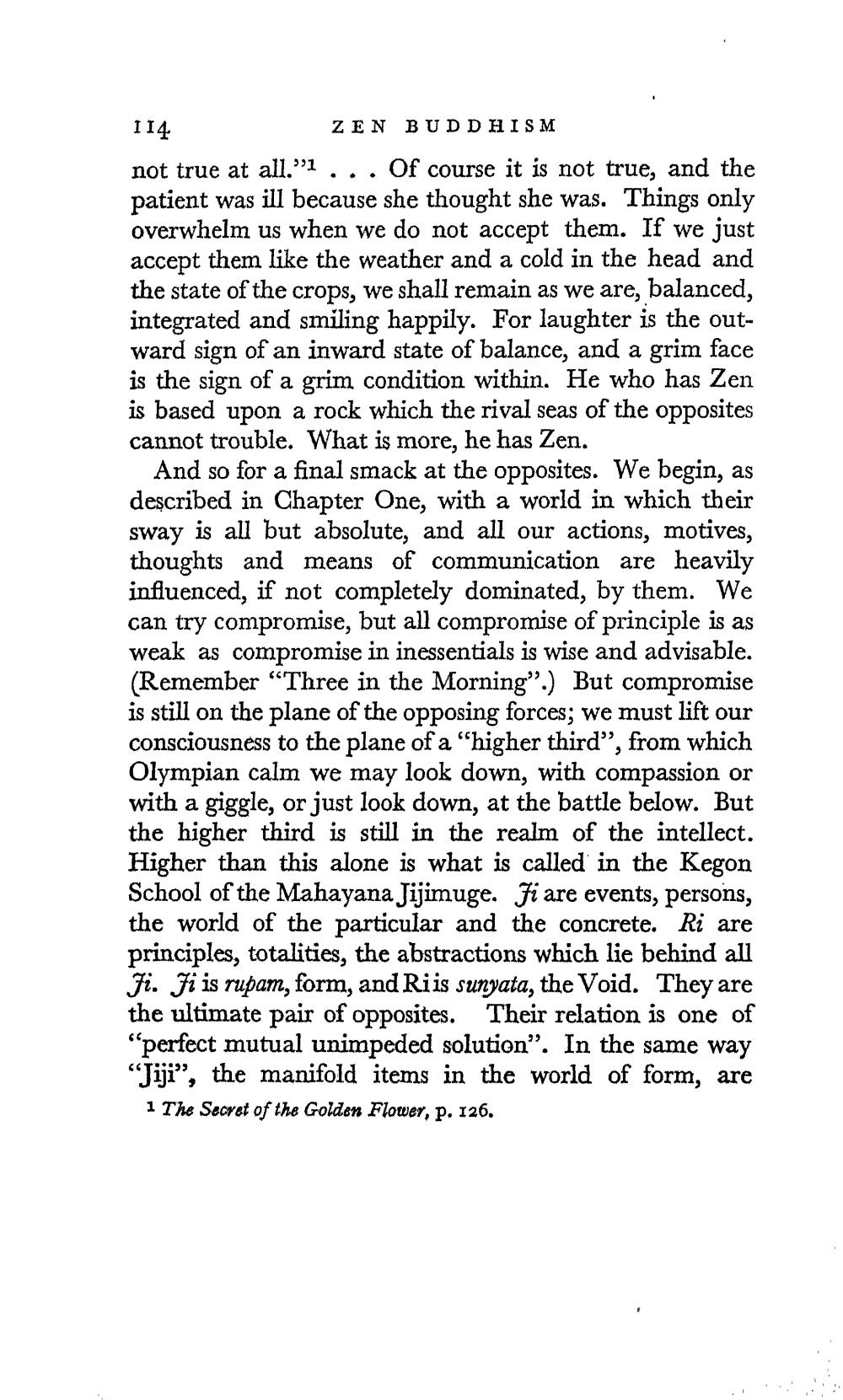________________
114
ZEN BUDDHISM not true at all."1 . . . Of course it is not true, and the patient was ill because she thought she was. Things only overwhelm us when we do not accept them. If we just accept them like the weather and a cold in the head and the state of the crops, we shall remain as we are, balanced, integrated and smiling happily. For laughter is the outward sign of an inward state of balance, and a grim face is the sign of a grim condition within. He who has Zen is based upon a rock which the rival seas of the opposites cannot trouble. What is more, he has Zen.
And so for a final smack at the opposites. We begin, as described in Chapter One, with a world in which their sway is all but absolute, and all our actions, motives, thoughts and means of communication are heavily influenced, if not completely dominated, by them. We can try compromise, but all compromise of principle is as weak as compromise in inessentials is wise and advisable. (Remember “Three in the Morning".) But compromise is still on the plane of the opposing forces; we must lift our consciousness to the plane of a “higher third”, from which Olympian calm we may look down, with compassion or with a giggle, or just look down, at the battle below. But the higher third is still in the realm of the intellect. Higher than this alone is what is called in the Kegon School of the Mahayana Jijimuge. Ji are events, persons, the world of the particular and the concrete. Ri are principles, totalities, the abstractions which lie behind all Fi. Ji is rupam, form, and Riis sunyata, the Void. They are the ultimate pair of opposites. Their relation is one of ''perfect mutual unimpeded solution". In the same way "Jiji”, the manifold items in the world of form, are
1 The Secret of the Golden Flower, p. 126.




